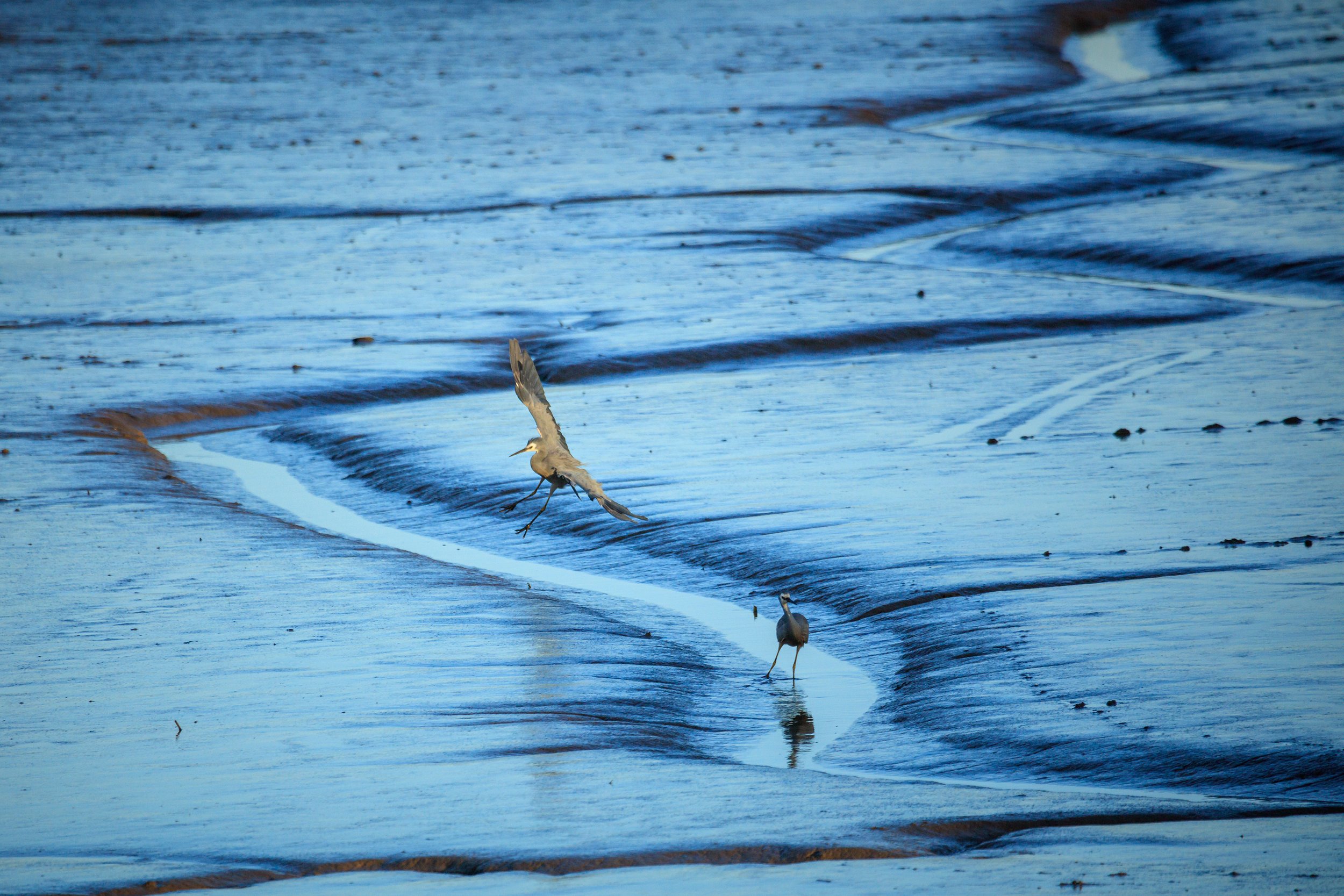
Natural history
The Kanamaluka / Tamar estuary is fed by five major river systems. It drains the largest catchment in Tasmania, and is the longest navigable estuary in Australia. It is also home to several threatened plant and animal species.
Formation
In the early geological history, instead of the Tamar Valley, there was a large peneplain that had been worn down by millions of years of erosion. From 95 to 65 million years ago, earthquakes split this peneplain apart making a trough through which rivers flowed, creating a lake. It filled up with unconsolidated gravel, clay, sand and boulder, and about 55 million years ago the lake was breached and drained.
Over approximately 25 million years, the South Esk River wandered through the old lake sediments which were easily eroded, creating the Tamar Valley. About 5 million years ago seawater flowed into the Tamar Valley, drowning the lower parts of the valley and turning it into an estuary. Changes in sea levels occurred frequently, especially over the past 2 million years during Ice Ages. The most recent major change is the sea level rise that occurred between 13,000 and 6,500 years ago.
Drowned river valley
Drowned river valleys exist in many other locations around the world, and the natural process of drowned river valleys is to infill with sediment over long geological timeframes. Tidal influences cause sediment to accumulate on the edges of the estuary, creating mudflats. As they consolidate, mudflats create space for reeds and other vegetation to establish, which in turn creates habitat for various animal species. Mudflats also allow for distinct channels to form, with flows directed through these channels. This process establishes the banks of the estuary and stabilises the system.
Biodiversity and natural values
The Kanamaluka / Tamar estuary is home to a wide variety of plants and animals. Ranked as the second most diverse estuary in Tasmania (out of 111 assessed), the estuary and its foreshore contain numerous habitat types including saltmarsh, seagrass, wetlands, mud flats, soft coral, and sponge gardens. These habitats are sanctuaries for myriad threatened flora and fauna species, including migratory birds.




